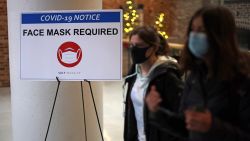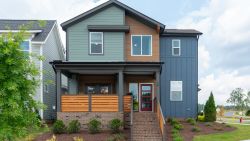The housing market showed early signs of a comeback last month after coronavirus shutdowns dampened sale activity earlier in the year.
An index measuring homes in contract to sell, or pending sales, jumped by a record 44% in May, according to the National Association of Realtors. This follows two months of steep declines.
More from Success
The spike in May was the highest monthly gain since NAR began tracking in 2001, and it was an indication that demand for homes remains strong, the association said.
“This has been a spectacular recovery for contract signings, and goes to show the resiliency of American consumers and their evergreen desire for homeownership,” said Lawrence Yun, NAR’s chief economist. “This bounce back also speaks to how the housing sector could lead the way for a broader economic recovery.”
The number of pending home sales is considered a leading indicator of housing activity. Pending sales include signed real estate contracts for existing single-family homes, condos, and co-ops that have yet to close. Since there is typically a month or two lag between signing a contract on a property and closing the deal, the Pending Home Sales Index generally leads completed sales of existing homes by a month or two.
Pent up demand and the continuation of low interest rates are pulling buyers back into the market, said Joel Kan, the Mortgage Banker Association’s associate vice president of economic and industry forecasting. “Even with high unemployment and economic uncertainty, the purchase market is strong.”
Mortgage activity climbed above year-ago levels for five straight weeks, according to the MBA’s recent weekly mortgage applications survey for the week ending June 19. But Kan cautions that high demand and low inventory may push prices higher.
“One factor that may potentially crimp growth in the months ahead is that the release of pent-up demand from earlier this spring is clashing with the tight supply of new and existing homes on the market,” he said. “Additional housing inventory is needed to give buyers more options and to keep home prices from rising too fast.”
But the pending sales show people are coming back into the market, even though many open houses are not being held and people are buying homes sight unseen.
“This move confirms that May closings could represent a low point for home sales, with June and July numbers looking much better,” said Danielle Hale, Realtor.com’s chief economist.
But possible coronavirus outbreaks in specific parts of the country may slow the recovery, she said.
“Emerging virus hotspots in the South and West could derail the improving trend,” said Hale. “For now, demand remains resilient, but we’re watching the new listings trend, as it’s a good indicator of what’s ahead for home sales.”
Every region of the country registered the jump in month-over-month pending home sales transactions on the index. The West had the largest increase, up by 56% in May. The Northeast jumped by 44%, the South by 43% and the Midwest by 37%. All regions were down from a year ago, though, except the South which was up 2% from last year.
“The outlook has significantly improved as new home sales are expected to be higher this year than last, and annual existing home sales are now projected to be down by less than 10% – even after missing the spring buying season due to the pandemic lockdown,” Yun said.


























